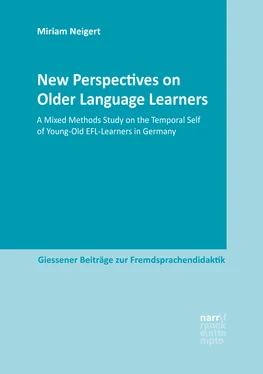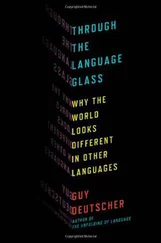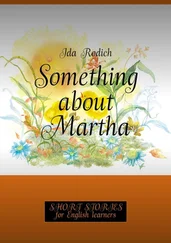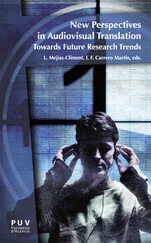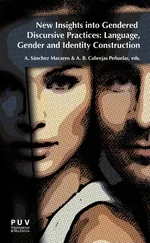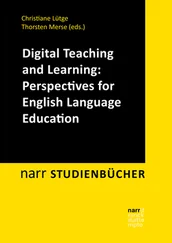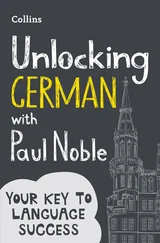Miriam Neigert - New Perspectives on Older Language Learners
Здесь есть возможность читать онлайн «Miriam Neigert - New Perspectives on Older Language Learners» — ознакомительный отрывок электронной книги совершенно бесплатно, а после прочтения отрывка купить полную версию. В некоторых случаях можно слушать аудио, скачать через торрент в формате fb2 и присутствует краткое содержание. Жанр: unrecognised, на английском языке. Описание произведения, (предисловие) а так же отзывы посетителей доступны на портале библиотеки ЛибКат.
- Название:New Perspectives on Older Language Learners
- Автор:
- Жанр:
- Год:неизвестен
- ISBN:нет данных
- Рейтинг книги:4 / 5. Голосов: 1
-
Избранное:Добавить в избранное
- Отзывы:
-
Ваша оценка:
- 80
- 1
- 2
- 3
- 4
- 5
New Perspectives on Older Language Learners: краткое содержание, описание и аннотация
Предлагаем к чтению аннотацию, описание, краткое содержание или предисловие (зависит от того, что написал сам автор книги «New Perspectives on Older Language Learners»). Если вы не нашли необходимую информацию о книге — напишите в комментариях, мы постараемся отыскать её.
New Perspectives on Older Language Learners — читать онлайн ознакомительный отрывок
Ниже представлен текст книги, разбитый по страницам. Система сохранения места последней прочитанной страницы, позволяет с удобством читать онлайн бесплатно книгу «New Perspectives on Older Language Learners», без необходимости каждый раз заново искать на чём Вы остановились. Поставьте закладку, и сможете в любой момент перейти на страницу, на которой закончили чтение.
Интервал:
Закладка:
Chapter 4 outlines the study’s research design, in order to find answers to the research questions. A mixed-method design has been chosen to investigate the young-old language learners’ L2 self-concepts and their temporal facets. Combining the results of a survey (quantitative data strand; QUAN) and an interview study (qualitative data strand, QUAL) can provide an expanded understanding of the complexities of language learner selves. Chapter 4 also introduces the research context: adult education centres – so-called Volkshochschulen (vhs centres) – in Germany to which young-old language learners typically turn if they intend to learn or brush up on a foreign language.
Chapters 5 and 6 present how the theoretical concepts introduced in earlier chapters were operationalized in the quantitative and qualitative instruments and how the respective data were collected and analyzed. Chapter 5 outlines the development and analysis of the questionnaire on the self-concept of young-old language learners. It brings together the results of 195 respondents, who are learning English as a foreign language at vhs centres in the German state of Hesse, and correlates the results with factors relevant to the research interests. The qualitative data strand evolves around interviews with 21 young-old learners at a local vhs centre. Similar to the survey, the interview guide aimed elicit information about young-old language learners. These two chapters – 5 and 6 – also present and contextualize the research study’s results in view of the research questions and the following merging stage. Following this, chapter 7 merges the two data strands presented in chapters 5 and 6 and draws meta-inferences based on the points of convergence and divergence between quantitative and qualitative perspectives.
The conclusion in chapter 8 gives a brief overview of the results and examines the implications of the results of the study for adult education institutions such as vhs centres in Germany and foreign language instructors, who are teaching older learners. This final chapter also presents directions for further research that emerged in the course of the research project.
2. Who are the Young-Old?
If, as seems presently true, the young-old will not form a strong age-group identification of their own, they might become the major agents of social change in building the age-irrelevant society. If they create an attractive image of aging, thus allay the fears of the young about growing old, and if they help to eradicate those age norms which are currently meaningless and those age attitudes which are currently divisive, they will do the society an untold service. Theirs is an enormous potential.
- Neugarten, 1974: 198 –
Ageing is something all humans have in common from the day they are born. This makes age a crucial part of our identities. In this chapter, however, we will see that there is more to age than the number of candles on our birthday cakes, that is, our chronological age. In the following, it will become clear in what ways age and ageing are multi-dimensional and constructed. The overall aim of this chapter is to give a clearer picture of the young-old and their age-specific characteristics. Referring to Neugarten’s quote above, the age group ‘young-old’, which has been largely overlooked in language teaching and learning research, is still widely exposed to persisting age-bias. How this affects their language learning self-concept and in what ways instructors can foster their language learning shall be at the core of this study.
2.1 Towards a Definition of the Young-Old
Internal and external factors affect how we age and they add to the individuality of the ageing process. Some of these factors we can control more easily than others. It is, for example, mostly our choice if we live healthily without smoking and follow a good diet, hoping to decrease our chances of serious illnesses as we get older. But some other factors, which impact how our bodies and minds age, we cannot influence. For example, current cultural notions of age and ageing influence our perception of what is considered old or how we evaluate old age. Furthermore, political or historical events, such as wars or crises, impact the lives and ageing of a cohort or generation. It is for reasons like these that variability among individuals increases with age (Dannefer & Settersten 2010: 4). This, in turn makes it difficult to come to a definition of an older age group such as the young-old.
I have taken the term young-old from literature on lifespan development and gerontology – the most prominent use of it being in an article by Neugarten (1974). In the 20 thcentury, life expectancy (also referred to as population ageing or societal ageing) has been increasing rapidly and researchers have started to further divide the old age phase of life (Phillips et al. 2010: 171; Nolda 2008). The former one-dimensional old age phase (after retirement) is now more commonly divided into young-old (Third Age) as well as old-old and oldest old (fourth age) (Laslett 1987; Neugarten 1974, Bromley 1990: 42). Alongside the term young-old, the term ‘third agers’ has been increasingly used when referring to members of an age group spanning from shortly before, to approximately 10 or 15 years after, retirement (see section 2.1.3).
A perspective I would like to use as a starting point for my discussion of the young-old appears in Neugarten’s (1974) article on age groups in American society. According to Neugarten, perceptions of the life cycle and stages in life have changed. Over the last centuries, concepts such as childhood or middle age have been introduced or become more explicit in our minds due to societal changes (e.g. industrialization). She postulates that the 20 thcentury has been the onset of forming another distinctive age group or phase in life: the young-old and their demarcation from the old-old (1974: 190f.). She defines the young-old as “relatively healthy, relatively affluent, relatively free from traditional responsibilities of work and family and who are increasingly well educated and politically active” (1974: 187). Even though Neugarten acknowledges the limited meaning of chronological age for defining an age group such as the young-old, she sets the age range at 55 to 75. Nevertheless, she sees a more important or defining characteristic of the young-old in the sociological marker of retirement (1974: 191). From these initial words on the young-old, it becomes clear that given the increased variability in old age as well as the attempt to set boundaries in terms such as chronological age, the definition of ‘young-old’ sails between vagueness and oversimplification.
We find four different dimensions of age or ageing in the gerontological literature (Karl 2009: 23; Phillips et al. 2010: 12): biological, chronological, sociological, and psychological. Departing from Neugarten’s definition here, I will use these four different dimensions and discuss how the young-old are positioned within these dimensions to find a working definition of the young-old for my study. I will discuss all of the dimensions in the following. Due to the nature of my research project, however, I will focus more strongly on the sociological and psychological dimensions.
2.1.1 Biological Dimension
The biological dimension of age and ageing – also referred to as senescence – is about how our body or physiological system ages. The ageing process of our bodies is dependent on our genetic disposition, our behaviour (e.g. diet and exercise), and to some extent also our environment (e.g. exposure to sun or chemicals). The physiological functions subject to change represent the so-called biomarkers and help to indicate the biological ageing process. These factors make our biological ageing a fairly unpredictable process: while one person needs a hearing aid at age 50, another person’s ears function very well until they are 75 (Rowland 2012: 167). Thus, this dimension alone is not very useful for describing the young-old learners in my study, as it is hardly possible to universally define biomarkers that would negatively impact their language learning process.
Читать дальшеИнтервал:
Закладка:
Похожие книги на «New Perspectives on Older Language Learners»
Представляем Вашему вниманию похожие книги на «New Perspectives on Older Language Learners» списком для выбора. Мы отобрали схожую по названию и смыслу литературу в надежде предоставить читателям больше вариантов отыскать новые, интересные, ещё непрочитанные произведения.
Обсуждение, отзывы о книге «New Perspectives on Older Language Learners» и просто собственные мнения читателей. Оставьте ваши комментарии, напишите, что Вы думаете о произведении, его смысле или главных героях. Укажите что конкретно понравилось, а что нет, и почему Вы так считаете.
